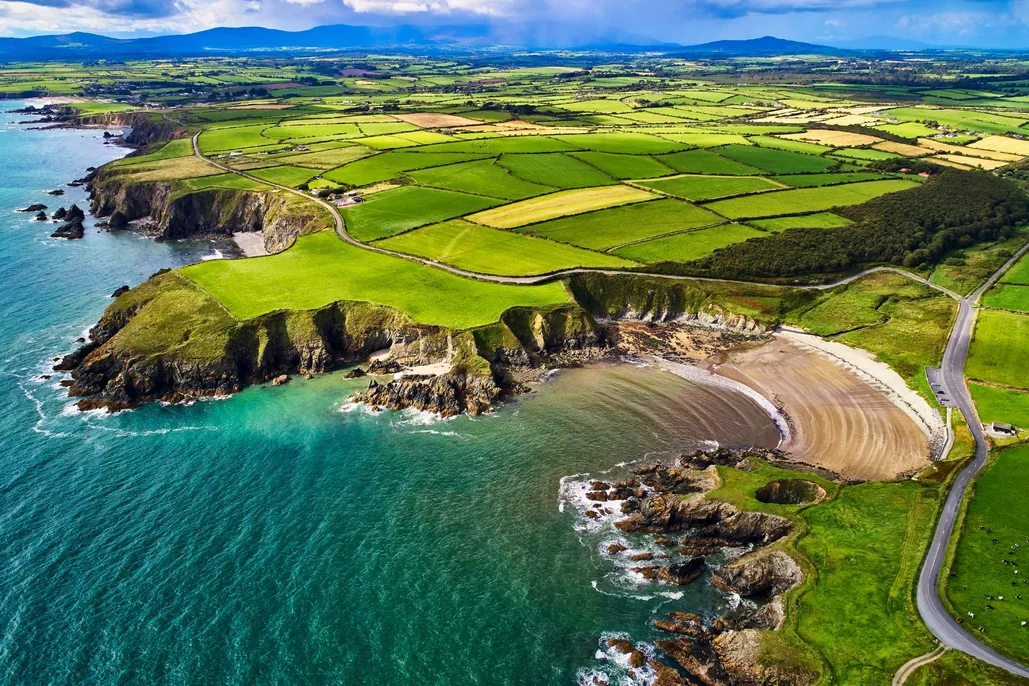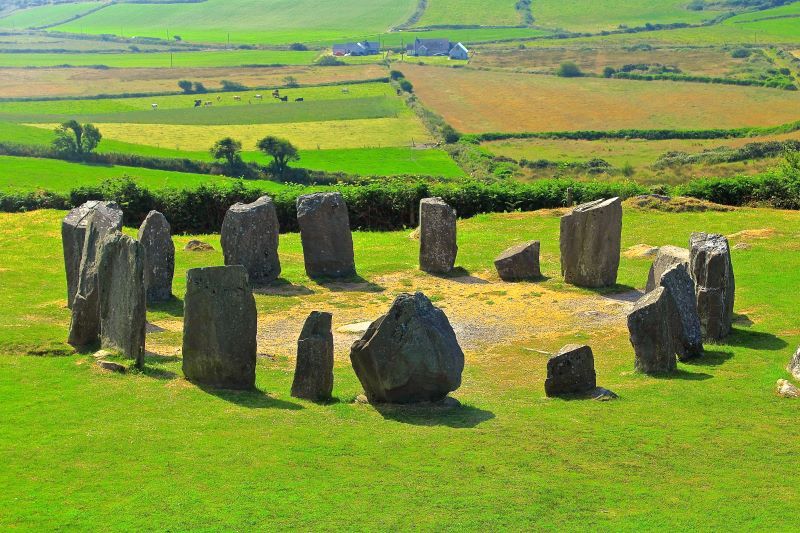

Ireland, the Emerald Isle, has a fascinating and often tumultuous demographic history. From periods of explosive growth to catastrophic decline and a modern resurgence, understanding the Ireland population is key to grasping the nation’s past, present, and future. This blog delves into the intricate details of Ireland’s demographic landscape, exploring its historical shifts, current trends, and future projections.
A Look Back: The Echoes of a Vanished Population
To truly appreciate the current state of Ireland population, one must journey back in time, particularly to the 19th century. This period stands as a stark reminder of demographic fragility.
Ireland population 1840 was a staggering figure, often cited as being around 8.2 million people across the entire island. This peak was the culmination of rapid growth in the preceding centuries, fueled by high birth rates and an agricultural system that, while precarious, supported a large rural populace, heavily reliant on the potato. The Ireland population density was considerable in many areas, particularly in the west, with many smallholdings supporting large families.
However, this period of unprecedented growth was tragically cut short. The Great Famine of 1845-1849, caused by successive potato crop failures due to blight, initiated a demographic catastrophe. The reliance on a single crop proved fatal. The famine led to mass starvation, disease, and, perhaps most significantly for long-term demographic trends, mass emigration. By 1851, the population of the island of Ireland had plummeted to around 6.5 million. The subsequent decades saw continued decline, driven by ongoing emigration and lower birth rates, as families sought to avoid the destitution that had plagued their ancestors. This era profoundly shaped the Irish diaspora, with millions seeking new lives in countries like the United States, Britain, Canada, and Australia.
The Turn of the Tide: A Resurgent Nation
After decades of decline that continued well into the 20th century, the Ireland population began to experience a gradual reversal. The Republic of Ireland, in particular, saw its population reach a low of 2.8 million in the 1961 census. However, from the 1960s onwards, a slow but steady increase began. This trend accelerated dramatically from the mid-1990s with the advent of the “Celtic Tiger” economic boom. This period of rapid economic growth transformed Ireland from a country of net emigration to one of significant immigration.
Current Demographics: A Vibrant and Diverse Landscape
Today, the Ireland population is robust and growing. The Ireland population 2021 census recorded the population of the Republic of Ireland at 5,123,536, exceeding five million for the first time since the 1851 census. Looking ahead, the Ireland population 2025 is estimated to be around 5.35 million for the Republic of Ireland, with the entire island (including Northern Ireland) reaching approximately 7.2 million.
The Ireland population growth rate has been significant in recent years. For 2023, the growth rate was reported at 2.71%, one of the highest in Europe. This growth is a complex interplay of natural increase (births minus deaths) and, crucially, net migration.
Let’s delve deeper into the composition of this growing population:
- Ireland population male and female: The sex ratio in Ireland is relatively balanced. According to 2023 estimates, the total sex ratio is approximately 0.99 males per female. At birth, there is a slightly higher ratio of males (1.057 males per female), which balances out in the older age groups.
- Ireland population by age: Ireland boasts one of the youngest populations in the European Union. In 2023, the age structure was approximately:
- 0-14 years: 19.98%
- 15-64 years: 65.26%
- 65 and over: 14.76% This youthful demographic profile contributes significantly to the country’s potential for continued growth.
- Ireland population density: With a land area of approximately 70,273 square kilometers, the Ireland population density for the Republic is around 73 people per square kilometer as of 2023. While much of the country remains rural, there is a clear trend towards increasing urbanisation, particularly in and around major cities.
The Tapestry of Belief: Ireland Population by Religion
Historically, Ireland has been overwhelmingly Catholic. However, the religious landscape of the Ireland population by religion is becoming increasingly diverse, reflecting the country’s growing multiculturalism. While Catholicism remains the largest denomination, its share of the population has been declining. The 2022 census data provides a comprehensive picture:
- Catholic: While still dominant, the percentage of the population identifying as Catholic has decreased from previous censuses.
- No Religion: A significant and growing proportion of the population identifies as having no religion.
- Other Christian denominations: Various Protestant denominations (Church of Ireland, Presbyterian, Methodist, etc.) constitute a smaller but stable portion.
- Other Religions: There has been a notable increase in followers of other religions, including Islam, Orthodox Christian, Hindu, and Buddhist faiths, reflecting the inflow of migrants from diverse backgrounds.
This shift in religious affiliation is a clear indicator of the changing face of Irish society.
Immigration: The Driving Force of Modern Growth
The resurgence of the Ireland population is inextricably linked to immigration. Ireland has become an attractive destination for people from across the globe, drawn by economic opportunities, a high quality of life, and an English-speaking environment within the EU.
In April 2024, approximately 15.5% of Ireland’s estimated population of 5.38 million were citizens of other countries. This translates to a significant number of foreigners in Ireland. The majority of these non-Irish citizens hail from other EU nations or the UK.
The largest immigrant group in Ireland from outside of Ireland are Polish and UK citizens, followed by Indian, Romanian, and Lithuanian citizens. There have also been significant increases in citizens from Brazil and India in recent years. In 2023, for instance, a substantial number of non-Irish citizens moved to Ireland, with India and Brazil being top countries of origin. The influx of Ukrainian citizens seeking temporary protection since 2022 has also significantly contributed to the non-Irish population. This diverse immigration has profoundly enriched Irish society, contributing to its workforce, cultural landscape, and demographic vibrancy.
The Future of Ireland’s Population: Projections and Challenges
Looking towards the future, what will Ireland be like in 2050 from a demographic perspective? Projections suggest that the Ireland population will continue to grow, contrasting with many other European countries facing declining populations. Reports from the late 2000s predicted the population could reach 6.7 million by 2060. Current trends support this continued growth, primarily due to sustained high net migration and a relatively healthy birth rate compared to its European counterparts.
While the birth rate in Ireland has been declining, it remains the highest in the EU. The crude birth rate for 2024 was 10.0 per 1,000 population, a decrease from 14.5 per 1,000 in 2014. The total period fertility rate (TPFR) in 2024 was 1.5, which is below the replacement level of 2.1 (the level at which a population replaces itself without migration). This means that while Ireland has a comparatively high birth rate, it is still reliant on immigration to sustain its population growth. The average age of mothers has also been increasing, reaching 33.3 years in 2024.
The fastest growing city in Ireland is projected to be Cork. According to various reports, Cork City is set to become the fastest-growing city in Ireland over the next 20 years, with its population expected to reach over 350,000 by 2040. This growth is underpinned by strong economic potential and a thriving business environment.
The continued population growth presents both opportunities and challenges. A growing population fuels economic activity and provides a larger workforce. However, it also places pressure on infrastructure, housing, and public services. Ireland is already grappling with a significant housing crisis, and continued population expansion will necessitate robust planning and investment to accommodate the growing numbers.
A Dynamic Demographic Future
The Ireland population narrative is one of resilience, transformation, and dynamic change. From the devastating losses of the 19th century to the robust growth of the 21st, Ireland has consistently defied simple demographic categorization. Its unique combination of a relatively high birth rate (for Europe) and strong inward migration paints a picture of a nation that is continually evolving. As we look towards 2050, Ireland is poised to remain a vibrant and increasingly diverse country, shaped by the ongoing ebb and flow of its people.
Frequently Asked Questions about Ireland’s Population
Is Ireland’s population growing or shrinking?
Ireland’s population is growing. It has seen significant growth in recent decades, primarily driven by immigration and a relatively high birth rate compared to other European countries. The Ireland population growth rate for 2023 was 2.71%.
How many foreigners are in Ireland?
As of April 2024, approximately 15.5% of Ireland’s estimated population of 5.38 million were citizens of other countries. This translates to over 830,000 foreign nationals.
What is the largest immigrant group in Ireland?
Based on recent census data, the largest immigrant groups in Ireland are generally Polish and UK citizens, followed closely by Indian, Romanian, and Lithuanian citizens. The number of citizens from India and Brazil has seen significant increases recently.
What was the population of Ireland at its peak?
The population of the island of Ireland reached its historical peak around 8.2 million in the 1841 census, just before the Great Famine.
Why did Ireland lose so much population?
Ireland lost a vast amount of its population primarily due to the Great Famine (1845-1849), which caused mass starvation and disease, and the subsequent mass emigration that continued for many decades due to poverty, lack of opportunity, and successive economic downturns.
What is the fastest growing city in Ireland?
Cork City is projected to be the fastest-growing city in Ireland over the next 20 years, with significant population and economic expansion anticipated.
Is the birth rate declining in Ireland?
Yes, the birth rate in Ireland is declining. The annual birth rate for 2024 was 10.0 per 1,000 population, a decrease from 14.5 per 1,000 in 2014. The total fertility rate is also below the replacement level.
Which countries’ population is shrinking the most?
Globally, many countries are experiencing population decline, especially in Europe. Some of the countries losing population fastest include Greece, San Marino, Belarus, Bosnia and Herzegovina, Albania, and Kosovo.
What is causing the population growth in Ireland?
The population growth in Ireland is primarily caused by a combination of strong net migration (more people immigrating than emigrating) and a natural increase (more births than deaths), even though the birth rate is declining.
What will Ireland be like in 2050?
By 2050, Ireland is projected to have a significantly larger and more diverse population. It is expected to be a more urbanized country, with continued growth in major cities. The population will likely be older on average, but still relatively youthful compared to many other European nations, and its multicultural fabric will be even more pronounced due to ongoing immigration.
When was the last baby boom in Ireland?
Ireland experienced a notable period of increased birth rates, often referred to as a “baby boom,” particularly during the 1970s and early 1980s, and again during the “Celtic Tiger” economic boom years of the late 1990s and early 2000s, which saw consistently higher fertility rates compared to the rest of Europe.
What country has the highest birth rate?
While birth rates fluctuate, countries in Sub-Saharan Africa consistently have the highest birth rates globally. As of recent data, countries like Niger frequently top the list for highest birth rates.
What is Ireland’s death rate?
According to 2023 estimates, Ireland’s crude death rate is approximately 6.7 deaths per 1,000 population.



